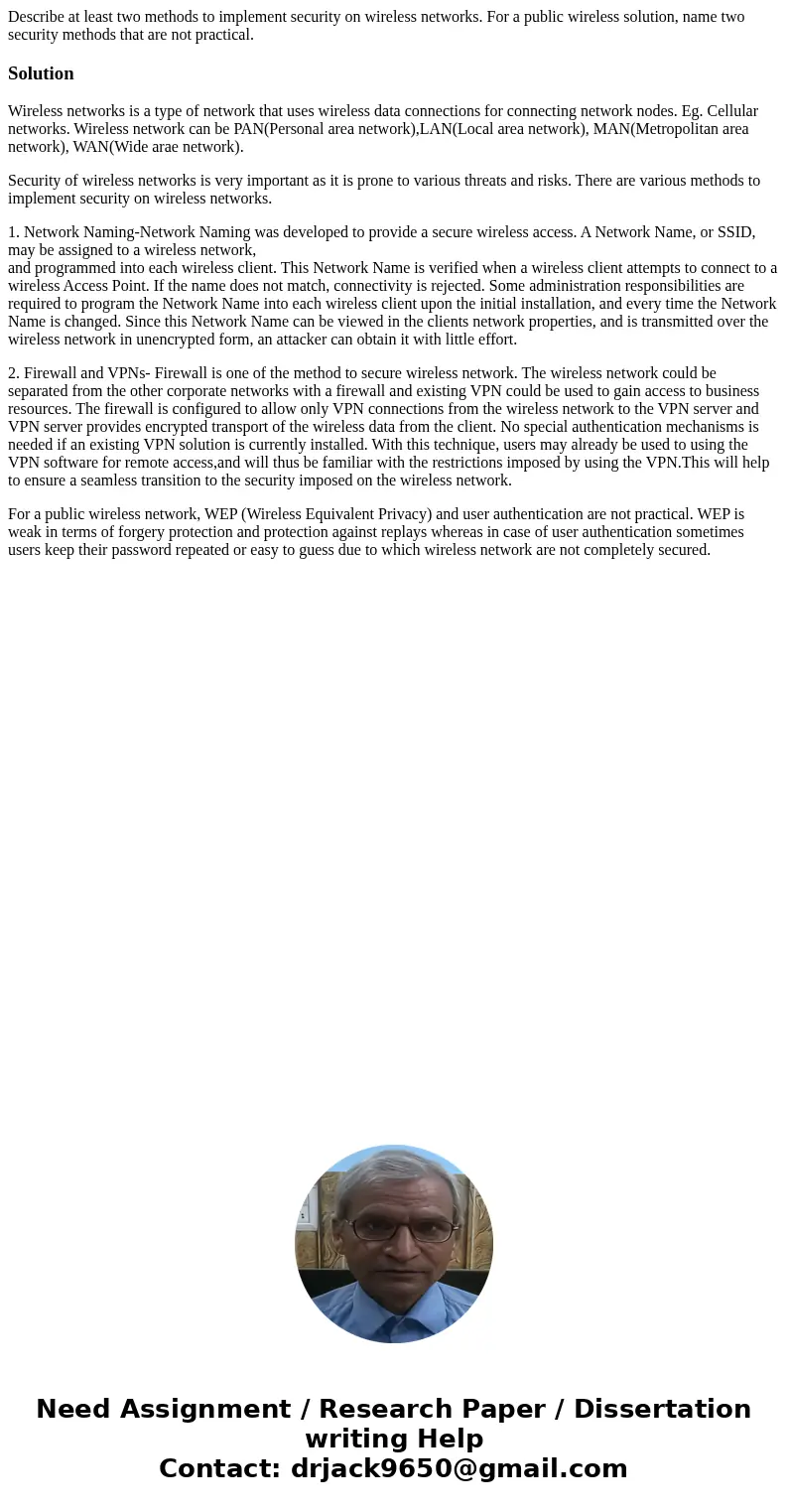Describe at least two methods to implement security on wirel
Describe at least two methods to implement security on wireless networks. For a public wireless solution, name two security methods that are not practical.
Solution
Wireless networks is a type of network that uses wireless data connections for connecting network nodes. Eg. Cellular networks. Wireless network can be PAN(Personal area network),LAN(Local area network), MAN(Metropolitan area network), WAN(Wide arae network).
Security of wireless networks is very important as it is prone to various threats and risks. There are various methods to implement security on wireless networks.
1. Network Naming-Network Naming was developed to provide a secure wireless access. A Network Name, or SSID, may be assigned to a wireless network,
and programmed into each wireless client. This Network Name is verified when a wireless client attempts to connect to a wireless Access Point. If the name does not match, connectivity is rejected. Some administration responsibilities are required to program the Network Name into each wireless client upon the initial installation, and every time the Network Name is changed. Since this Network Name can be viewed in the clients network properties, and is transmitted over the wireless network in unencrypted form, an attacker can obtain it with little effort.
2. Firewall and VPNs- Firewall is one of the method to secure wireless network. The wireless network could be separated from the other corporate networks with a firewall and existing VPN could be used to gain access to business resources. The firewall is configured to allow only VPN connections from the wireless network to the VPN server and VPN server provides encrypted transport of the wireless data from the client. No special authentication mechanisms is needed if an existing VPN solution is currently installed. With this technique, users may already be used to using the VPN software for remote access,and will thus be familiar with the restrictions imposed by using the VPN.This will help to ensure a seamless transition to the security imposed on the wireless network.
For a public wireless network, WEP (Wireless Equivalent Privacy) and user authentication are not practical. WEP is weak in terms of forgery protection and protection against replays whereas in case of user authentication sometimes users keep their password repeated or easy to guess due to which wireless network are not completely secured.

 Homework Sourse
Homework Sourse